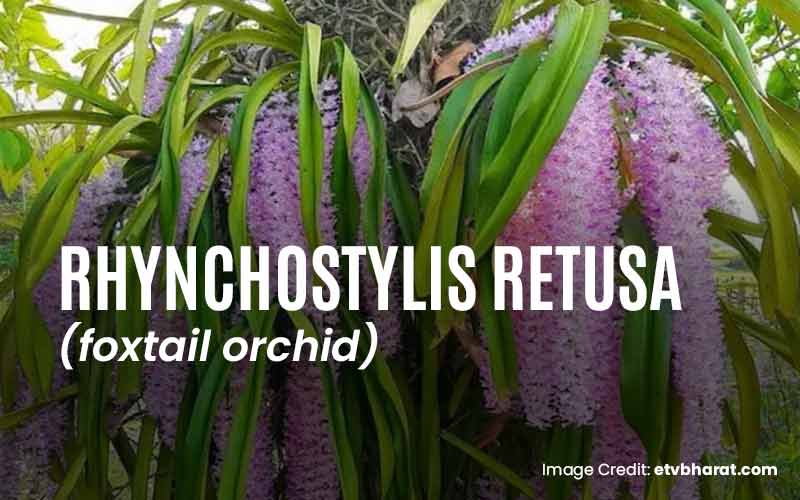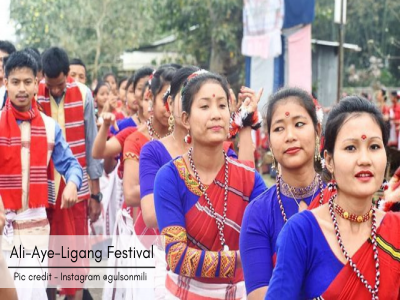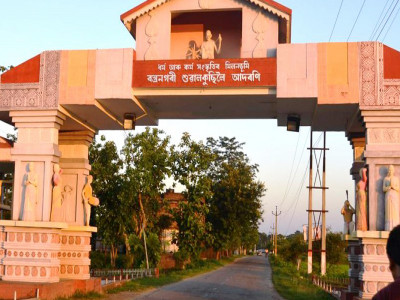
Orchids of Arunachal- part 1
Arunachal Pradesh has been often quoted as the 'Orchid Paradise of India', why? Because approximately 622 species of orchids (which amasses about 40% of the country's orchid species) can be found in the State, with the highest concentration of orchid species speculated to be based in the Ziro Valley, Lower Subansiri District. Indeed, the state is a hotspot for botanists.
Dr. AbbareddyNageswara Rao, a scientist hailing from Andhra Pradesh discovered 33 new species of orchids, of which 28 belonged to Arunachal Pradesh, which is a feat in itself -making him hold the highest records achieved than any other scientist in India. Furthermore, he also played a vital role in the team that developed five new species of hybrid orchids from Arunachal Pradesh. To commemorate him and his contributions, a new orchid species discovered in the state, Dendrobium nageswarayanum, was named after Dr Nageswara Rao.
Let's follow through with a few orchids that can be found in the natural environment of Arunachal Pradesh\
Rhynchostylisretusa
What would be a better way than to start with its State flower? Also known as the foxtail orchid or Draupadi Mala in Hindi. It is an Epiphyte herb that can be witnessed either mixed in pink, white, purple or lilac-coloured flowers, closely packed and growing up to 30-40cm long. Their natural habitats are moist, shady, deciduous forests and groves with their flowering and fruiting season being June-July.
It is termed foxtail orchid because of its foxtail-like long, fluffy, plunging inflorescence shape. Arunachal's neighbouring sister, Assam also recognizes it as its state flower and it holds a significant value to their culture.
Impatiens Dorjeekhanduii (Balsaminaceae)
It is the species of orchid belonging to the Balsaminaceae family. It was collected and discovered in the year 2017 by Dr. Krishna Chowlu, a scientist from the Botanical Survey of India (BSI), and a team at the Zemithang area in Tawang district of Arunachal Pradesh. The orchid was named after the former CM Shri DorjeeKhandu to commemorate his contribution and service to the state.
This orchid can be specifically found only in its type locality, which is Zemithang. It is an annual herb, branched, 10-50 cm tall, with distinct white and purple in colour. Impatiens dorjeekhandui thrives in the perimeters of shady, moist, temperate, and broadleaved forests.
Spathoglottisarunachalensis (Orchidaceae)
This yellow-flowered Spathoglottis is also an exotic orchid species uncovered recently at the Sessa Orchid Sanctuary, West Kameng District. Its name is labelled after the state Arunachal Pradesh, where it was initially discovered. Spathoglottisarunachalensis was first spotted in October 2016 by a team of Orchid Research Centre, Tipi, during a field trip to the Sessa Orchid Sanctuary. After collecting and reviewing, it was confirmed as a new orchid species.
It is a type of terrestrial orchid that blooms almost all through the year. However, as per the IUCN criteria (2014), this new species has been provisionally classified as critically endangered. It was disclosed after the discovery, that out of about 50 species of genus Spathoglottis around the world, only four, including the new finding, are found in India. The type specimens of the new species are preserved in the orchid herbarium in Tipi, Arunachal Pradesh.
Although several of its characteristics are contrasting, Spathoglottisarunachalensis has been associated with S. ixioides morphologically. The details of this new species have been officially published in the international journal of plant taxonomy, Phytotaxa, co-authored by Dr JambeyTsering of the Orchid Research Centre (ORC), Tipi, and Dr Kothareddy Prasad of the Botanical Survey of India, Hyderabad.
Dendrobium nageswarayanum
Miniature in size, Dendrobium nageswarayanum is also a relatively new species with brownish or copperish-coloured flowers. It was discovered in Koloriang, KurungKumey district of Arunachal Pradesh and described by Dr Krishna Chowlu, hailing from Namsai district. It has been dubbed nageswarayanum after Dr AbbareddyNageswara Rao, ex-orchidologist of Arunachal Pradesh’s State Forest Research Institute, to honour his contributions to the study and preservation of orchids in the state.
It was disclosed after the findings that the newly discovered species is closely related to Dendrobium subansirienseVerma and Barbhuiya, but differs in characteristics having an inflorescence, flowers, lateral sepals, and lateral margins of the lip.
Bulbophyllummedioximum
It was identified at Sessa Orchid Sanctuary by Dr Krishna Chowlu, the only Arunachali serving as a scientist at the Botanical Survey of India (BSI).
Bulbophyllummedioximum is an epiphytic herb type of orchid, with its length being 18-21 cm high including the inflorescence. Its beautiful flower can be 5mm across (petal to petal) with a wide opening, having hues of pale purple with deep purple linings, its lip being pale purple with deep purple linings and yellow colour in its epichile.
It is a miniature-sized epiphyte hence, it grows on trees at an elevation of around 1,071 meters in open grasslands. One can witness it blossom around November-December. Apart from Arunachal Pradesh, India, it can also be found in China, Thailand and Vietnam.
Arunachal Pradesh is home to several rare, endangered orchid species both discovered and yet to be discovered. The state is actively engaged in researching, identifying and conserving its valuable orchids with the establishment of the Orchid Research and Development Centre (ORDC) at Tipi, and the Sessa Orchid Sanctuary, Bhalukpong, West Kameng District in 1989.
Trivia: Sessa Orchid Sanctuary in West Kameng District is India's first Orchid sanctuary.
Disclaimer: The opinions expressed in this article are those of the author's. They do not purport to reflect the opinions or views of The Critical Script or its editor.

Newsletter!!!
Subscribe to our weekly Newsletter and stay tuned.

















Related Comments